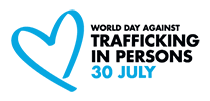Dogs from the Anti-Narcotics Police Dog Training Center responsible for 15% of total drug seizures in Iran.
|
Boreii is a mixed Cocker Spaniel; Nero, Bambi and Zozo are Malinois (short-haired Belgian Shepherds). They belong to a highly trained drug detecting unit of police dogs from the Iranian Anti Narcotics Police. Just the sight of these police dogs is enough to deter drug traffickers from attempting to pass checkpoints. Police dogs from this unit are responsible for up to 15% of all drug seizures in Iran. In 2014 this would account for some 1,950 kg of heroin which has a street value of US$ 780 million, or the seizure of about 75 tons of different kinds of drugs such as opiates, cannabis methamphetamine and other synthetic drugs.
UNODC has supported the work of the Iranian Anti-Narcotics Police dog training center since 2008, through providing drug detecting dogs and training of both dogs and handlers.
With the support from UNODC and International Community the center has increased its capacity and covers the operations of Anti-Narcotics Police and Border Police drug detecting teams throughout the whole country. The police dogs are significantly contributing to reducing the illicit flow of drugs into Iran and onward transit to other countries. In 2014 Iranian law enforcement seized over 500 tons of different drugs, including over 13 tons of heroin with a market value of over US$ 5 billion in the European market. The drug detecting teams were responsible for about 15% of the total seizures being made in the country, equaling to around 75 tons in 2014.
Under the UNODC Country Programme, sub-programme 1 "illicit trafficking and border management" through the generous support of the Government of Japan, UNODC has been providing Iranian Anti-Narcotics Police with drug detecting dogs and training of dogs and handlers on narcotics search. The increase in the amount of seizures being made from 2011 to 2014 is considered as a valid indicator of success for both the center and UNODC.
On 1 July 2015, UNODC Representative, Mr. Leik Boonwaat, visited the center together with Mr. Hossein Asgarian, from the UNODC office in Tehran, as well as Mr. Ferrari and Ms. Tay from the OIOS in Geneva. The aim was to discuss the achievements as well as the needs of the center. During the visit a demonstration of agility exercises and obedience as well as narcotics search by drug detecting dogs was performed, followed by a tour of the center's facilities including the kennels, the veterinary surgery room, physiotherapy room, radiography room and the pharmacy. |
|








